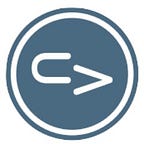Using Implicit Techniques to Reveal Color Trends
The Problem: One of the biggest global domestic appliance firms wanted to understand the color trends of that particular year and whether their consumers were interested in more colorful domestic appliances. There were several attempts for colorful appliances, and these attempts were a huge success. However, it is crucial to understand whether the market demands more colorful appliances. The client prepared a dozen different color options to test and wanted to get feedback from a group of consumers.
The Challenge: It is very challenging to understand the needs in the industry, as consumers would like to depict their colorful personalities when they buy a product or decorate their home, however on the other hand, when making big ticket items (like a fridge or washing machine) they hesitate to take risks, hence conventional research methodologies may fall short of understanding the needs of this audience.
Our methodology: As Uservision, we recommended a 3 step methodology to have a holistic understanding of the context. And we were lucky that our brand agreed to use these cutting-edge implicit research techniques.
1. Max-Dif Surveys: Through a max-dif survey, we wanted to understand the current purchase habits of consumers and make consumers compare different colors to each other, instead of showing consumers the products in an isolated manner. This comparison allowed consumers to rank different colors and reveal relative performance more objectively than simple surveys.
2. In-Depth Interviews and Cardsorting: We conducted in-depth interviews and leveraged cardsorting to understand how consumers group different colors, hence we understood their context, and how consumers categorize colorful appliances cognitively and we used projective techniques to understand whether color could play a role in consumers’ homes. We also asked them to tour their home and understand the semiotics of colors in their life.
3. Implicit Response Test: We used a technique called Implicit Response Test, a technique stemming from Harvard professors and mostly used by social psychologists that helps to reveal implicit tendencies of individuals. We used this technique to fine-tune which colors are more appropriate for bathrooms and kitchens and to understand if consumers implicitly skew to certain colors.
Results: The 3 step methodology was a huge success! In surveys and explicit interviews, consumers mention that they are highly motivated to use colorful appliances in the kitchen and bathroom. On the other hand, implicit research results depicted that they are dramatically avoidant using these colors. Only several colors are more acceptable for these consumers’ homes.
On top of understanding which colors consumers are more prone to buy, we understood the ‘why?’ and emotional math behind these decisions.
Max-dif enabled us to shortlist 30+ colors to a dozen. IRT allowed us to fine-tune which colors work best and which colors would never work, although implicitly consumers mention they wanted them, and in-depth interviews powered by projective techniques explained why consumers chose these particular colors and how to emotionally position and market them.
